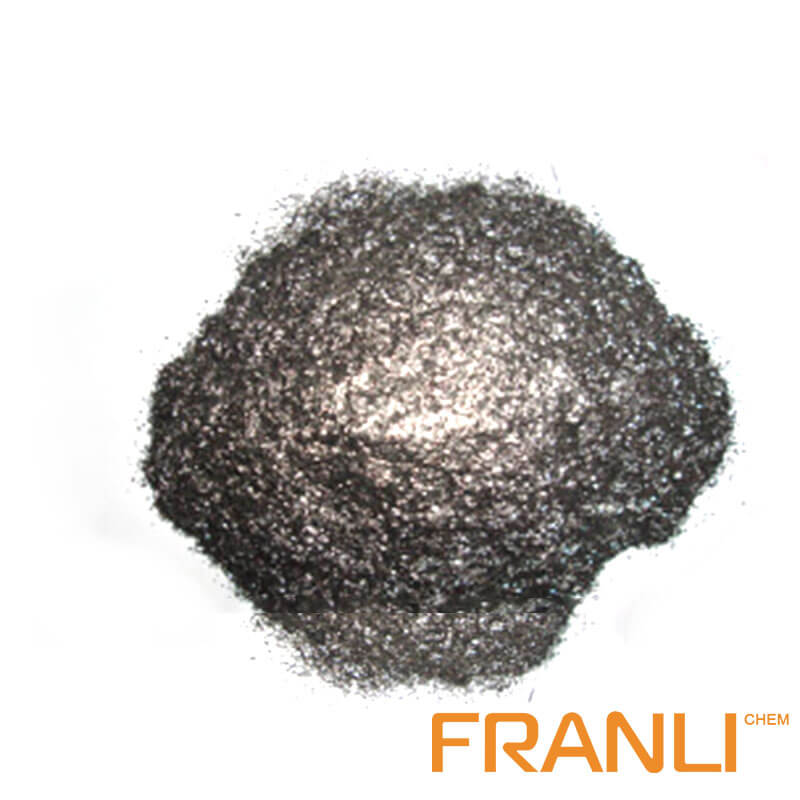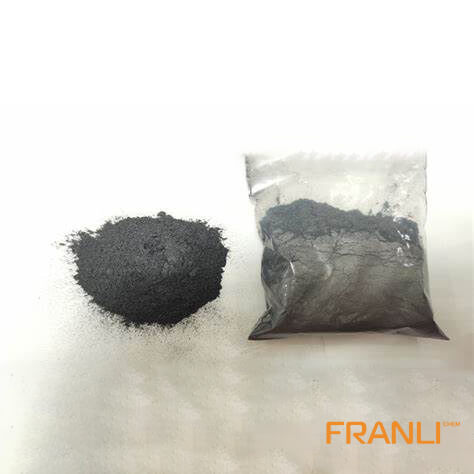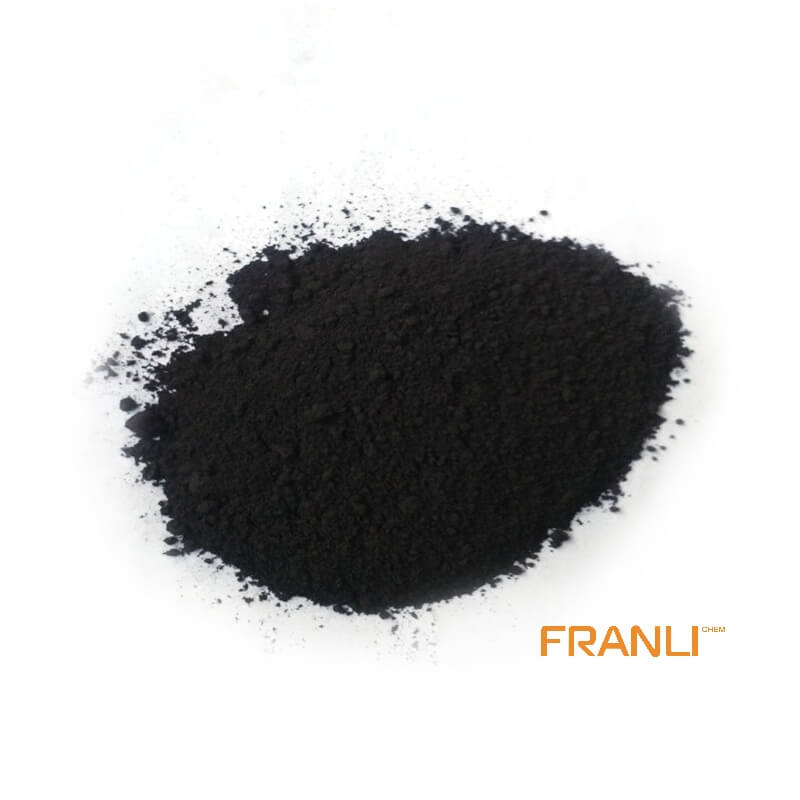



Flake Graphite
Size
0.01mm
Carbon Content
99%min
Package
25kg small bags into ton bags
Origin
China
Features
thermal shock resistance, lubricity, conductivity and plasticity…
Application
Lead battery plates positive and negative conductive agent, lithium batteries nickel hydrogen etc
Natural flake graphite has superior physical and chemical properties and is widely used in metallurgy, coatings and refractory industries. It is an important non-metallic raw material that is indispensable for today’s high-tech. Flake graphite is divided into large flake graphite and fine flake graphite according to the size of its scales. Usually, large flakes refer to +32 mesh, +50 mesh, +80 mesh, and +100 mesh flake graphite.
Request a quote
Flake graphite is used more and more in our life.
Graphite is a kind of carbonaceous nonmetallic mineral, which belongs to high-performance crystalline carbon material. It has excellent thermal conductivity, electrical conductivity, high and low-temperature resistance, radiation resistance, corrosion resistance, self-lubricating, and other properties. It is widely used in metallurgy, machinery, automobile, atomic energy, medicine, military industry, battery, aviation, and other fields. It has become one of the indispensable raw materials in high, new, and cutting-edge science and technology fields in the 21st century, It plays a more and more important role in the national economic construction, just as the international experts predict: “the 20th century is the century of silicon, and the 21st century will be the century of carbon”.
Natural graphite is widely distributed and rich in resources in China. Its reserves and output are among the top in the world. However, with the continuous progress of science and technology, ordinary high carbon graphite can not meet the requirements of the high-tech industry. Whether it is used in manufacturing artificial rutile, sealing, electrode, heat conduction, nuclear power, national defense, aerospace, and other fields, the content of fixed carbon in graphite is required to be more than 99%. Therefore, the purification of graphite is very important for the development of the world.
The technological characteristics of graphite mainly depend on its crystalline morphology. According to the different crystalline morphology, natural graphite can be divided into three types in the industry: dense crystalline graphite (massive graphite), cryptocrystalline graphite (earthy graphite), and flake graphite.

Massive graphite is rare in nature and is the most valuable graphite ore.
The crystalline state of earthy graphite is the worst, and the crystal diameter is less than 1 μ m. The specific surface area is mainly distributed in 1-5m2 / g, which is the aggregate of microcrystalline graphite. The complete crystal form can only be seen under the electron microscope. The surface is earthy, lacks luster and lubricity, poor floatability, but is high grade. The fixed carbon content is generally 60% – 80%, and a few can reach more than 90%;
Flake graphite is one of the most floatable ores in nature. High-grade graphite concentrate can be obtained after repeated grinding and separation. The floatability, lubricity, and plasticity of this kind of ore are better than other types of graphite, so its industrial application value is the largest.
According to the characteristics of flake graphite, this paper introduces the purification methods and principles of flake graphite compare and discuss the advantages and disadvantages of the flotation method, alkali acid method, hydrofluoric acid method, chlorination roasting method, and high-temperature purification method, and puts forward suggestions on the development direction of purification technology of flake graphite, so as to provide a reference for the future research of flake graphite.
General situation of flake graphite
The flake graphite is formed by high-pressure metamorphism. It is generally bluish-gray and weathered to yellowish-brown or grayish-white. It mainly occurs in gneiss, schist, crystalline limestone, and skarn. The associated minerals are complex. The main component is flake crystalline carbon, accompanied by feldspar, quartz, biotite, pyrite, pyrrhotite, rutile, and other impurity minerals. grey Most of the flake graphite is natural phanerocrystalline graphite with a layered structure. It is fish scale-like in shape and belongs to the hexagonal crystal system. The crystalline state is good and the particle size is 0.05-1.5 μ 0
Flake graphite is mainly distributed in Australia, Brazil, Canada, China, and Madagascar. In China, flake graphite is mainly concentrated in Heilongjiang, Shandong, and Inner Mongolia. The lumber area in Heilongjiang Province has the largest scale graphite deposit in China, with a reserve of 13.48 million tons. Flake graphite can be produced into three grades. The diameter of grade 1 graphite flake is the largest, the size of grade 2 graphite flake is medium, and grade 3 graphite flake is fine. After separation and enrichment, the carbon content of flake graphite is generally 80% – 99.5%

Purification methods and research progress of flake graphite
The main purification methods of flake graphite are as follows
① Flotation purification method;
② Chemical purification methods include alkali acid method, hydrofluoric acid method, and chlorination roasting method;
③ Physical purification method, namely high-temperature purification method.
Conclusion and Prospect
The purity of graphite determines its use. With the continuous expansion of the application range of graphite, the requirement for its purity is also higher and higher. Experimental research and industrial practice show that different purification methods have different advantages and markets.
(1) Flotation method is generally used to purify natural graphite with low grade. After a period of enrichment, the graphite is purified to the grade of medium carbon graphite. The equipment used in this process is simple and the production cost is low, but the over-grinding is not conducive to the protection of graphite flakes. Therefore, we can focus on the breakthrough in the grinding and floating process, so as to obtain better quality graphite and at the same time, at least destroy the graphite flakes. In addition, new flotation reagents and flotation equipment can be developed to optimize the flotation effect of flake graphite.
(2) Alkali acid method is a widely used and ideal purification method for flake graphite, but it has high energy consumption, complex process, and large water consumption. It can be improved from the aspects of energy-saving and consumption reduction, simplifying the process flow and strengthening the activation effect, so as to achieve the goal of low consumption and high-efficiency purification.
(3) The purification effect of graphite by the hydrofluoric acid method is remarkable, but the use of hydrofluoric acid is limited because it is highly toxic and seriously pollutes the environment. environment protection
(4) The purification effect of graphite by chlorination roasting method is limited, and the chlorine gas is toxic, which is not conducive to health and environmental protection. In future research, we can study from the aspects of equipment and tail gas treatment, strive to use non-toxic high-temperature volatilizers to replace chlorine, and develop low-cost and high-efficiency equipment to produce high-purity graphite.
(5) High-temperature method is an effective way to realize the production of ultra-pure graphite, but it has high requirements for raw materials and equipment. Therefore, in future research, we can improve and optimize the roasting equipment and optimize the composition of raw materials, such as adding appropriate additives to reduce the volatilization temperature and realize industrial continuous production.



